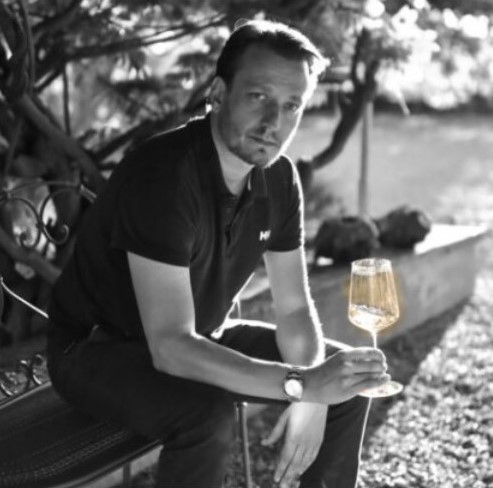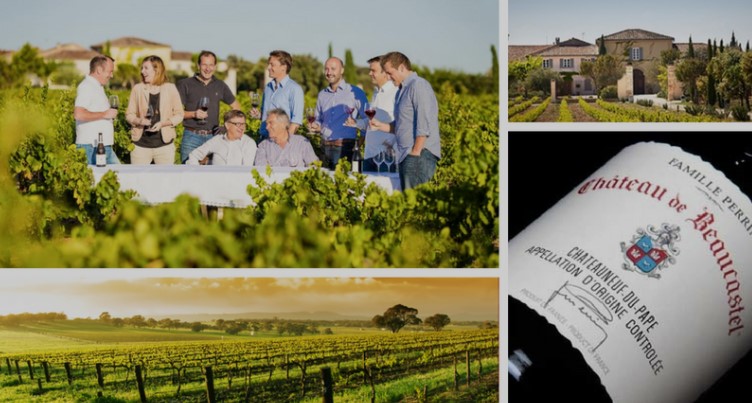Charles Perrin
Co-owner Château de Beaucastel
 We are offering the Inside in an audio file
We are offering the Inside in an audio file 
Château de Beaucastel’s cuvée Hommage à Jacques Perrin, emblematic of the Chateauneuf-du-Pape appellation, is considered to be one of the world’s greatest wines. Perfectly reflecting the philosophy of the Perrin family, who see a great wine as a timeless emotion and a symbol of civilisation, this legendary cuvée was launched in 1989. Charles Perrin was in Bordeaux for the Hors Bordeaux tasting, organised by Excellence Vin. It was the perfect opportunity to ask him a few questions.
Presentation
Gerda: You are the 5th generation to cultivate and vinify family wines and one of 7 cousins who are owners, all of whom have a foot in the vineyard, the cellar and the market. What are the main challenges you personally face in your job?
Charles Perrin: That’s a very broad question. We face a number of challenges. We are a family business, the 5th generation at the head of the estate, with nine members working together: seven from the 5th generation, two from the 6th generation coming in, and soon, the 7th generation. The challenge of passing the business down is crucial. It drives us: keeping it in the family is our goal.
In terms of organization, we aim to be versatile; that’s the philosophy behind how we work. Everyone starts their career in the vineyard or the cellar, and based on their interests, they either move into sales or stay in the cellar. It’s important that everyone understands every aspect of our business. We don’t rule out changing roles every 5 or 6 years. Someone in charge of sales might take over managing an estate, then work in vinification, and later return to the markets. There are no fixed roles. How will this evolve? How do we structure ourselves to maintain family harmony and ensure the long-term success of the business? It’s a constant challenge.
Another major challenge, of course, is climate change. I think it’s one of the biggest issues our industry faces today. How will we be making wine 30 years from now with global warming? We’re already feeling the effects in the vineyards. Additionally, there’s a growing societal trend to view alcohol as taboo. The younger generation is drinking less, and we need to consider that as well. But the greatest challenge is the passage of time. Time is a wonderful ally for wine, as it improves with age. The future is both exciting and a bit daunting.
The Hommage of Jacques Perrin Beaucastel brand today
G: What positioning do you want for this brand, and what makes it unique ?
CP: The first vintage was made in 1989, while the first vintage sold on La Place de Bordeaux dates from 2009, followed by 2011. This is the first wine from outside Bordeaux to be offered on La Place, 30 years after its creation.
Before being distributed via La Place de Bordeaux, Hommage was a secret wine. It didn’t appear on our price list and only a few Michelin-starred restaurants and friends had access to it. The aim of putting it on La Place, and joining this market of Fine Wines, was to break out of this anonymity, to lift the veil on this secret, and to reach markets abroad that had never heard of this wine. It’s an iconic wine with which we have a special relationship. It comes from a single parcel of land, which gives it great exclusivity, and it is produced in very limited quantities (10,000 bottles).
Its unique positioning is due in particular to its grape variety, which is predominantly Mourvèdre, in a region where Grenache is generally dominant. This wine has always been grown organically and has always been out of step with market trends.
G: Château de Beaucastel is undergoing a major transformation. The new winery will be operational for this harvest. Could you tell us a little about this project?
CP: The first harvest to be made entirely in the new winery will be in 2024. I grew up at Château de Beaucastel, where our house adjoined my grandmother’s house. My grandfather died young, in 1979, after spending almost 40 years with her, but she also lived almost 40 years without him. For her, this place had great sentimental value. Beaucastel had always been a beautiful property, but we’d never really made our mark on it. Whenever we wanted to cut down a tree or simply repaint, my grandmother would remind us: ‘It was your grandfather who planted that tree’ or ‘It was he who chose that colour of paint. This made it difficult for us, the new generation, to impose our vision, as my grandfather’s shadow always loomed large. When my grandmother died, although we were very sad, we realised that it was the right time to start renovating.
We launched a competition, which is quite rare in our region. The competition was an incredible success, with 1,300 entries from 20 different nationalities. The winner was an Indian architect, Bijoy Jain (Studio Mumbai), who had a brilliant idea. He told us: ‘Your grandmother was right, nothing should be touched unless the changes come from you. We’re going to rebuild the new Beaucastel with the old Beaucastel. 80% of the materials we’re going to use will come from the site.’
We dug a hole 50 by 50 metres and 15 metres deep, going back 15 million years. We built part of Beaucastel with this soil, but also with old concrete, wood, tiles and so on. We rebuilt with what was already there.
There’s no traditional concrete or iron. Everything is built in earth, without reinforcement, simply thanks to the ingenious calculations of the architect. This was a very long project, because everything was built using the earth on the site. We went back to the origin. It’s the largest building ever built using this technique. Today, this project may seem a little surreal, but I’m convinced that with time, we’ll have a better understanding of the reasons behind it and how it was implemented. The building is self-sufficient in electricity, water and materials. It’s an ecological project, but it’s not just designed with that in mind. Every day, we are amazed by this project.
What’s remarkable is that, although the work is visible, the architect’s impact is almost imperceptible. He told us: ‘I don’t want to leave any traces, because I’m not the star. The star is the wine.
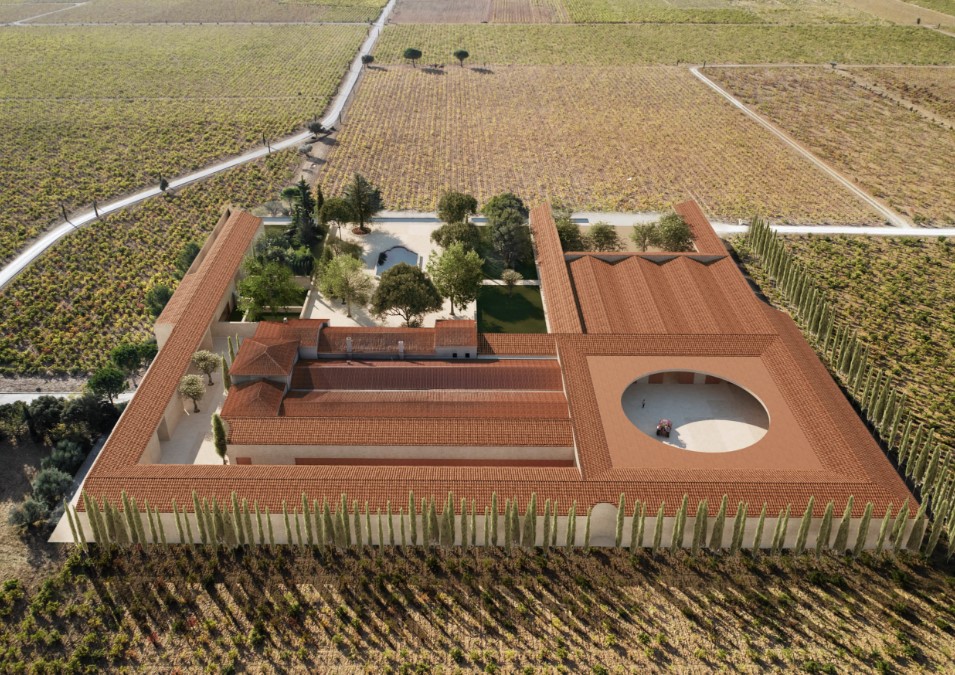
G: What other future projects are you working on at the moment (technical, marketing or commercial)?
CP: We’re constantly working on new projects, because we have an entrepreneurial spirit. There are a lot of us, so we need to keep everyone busy. The children will be arriving soon, and our aim is for everyone to be able to find their own path and integrate into society, whatever profession they choose. We have already diversified our activities in several wine-growing regions*. Whether in Provence with Miraval, in Champagne, in the United States, or in the Northern and Southern Rhône regions, our presence is now extensive. We recently launched a spirits brand called The Gardener**. We also have a top-of-the-range cosmetics brand called Beau Domaine***.
We still have many diversified projects, notably in documentary filmmaking and in the restaurant sector. What is exciting about our job is that we don’t restrict ourselves in any way. We make sure that everyone develops, so that we stay together as a family and maintain harmony between us.
We don’t force anyone; it’s essential that everyone’s talents can be expressed, always within a respectful framework. It has to be fulfilling, because frustration within the family can be very harmful, and we have to fight against that.
The Business
G: Hommage à Jacques Perrin has been sold by La Place de Bordeaux since 2011. Why did you take this decision?
CP: First of all, it was an opportunity to be the first. We like the idea of being pioneers. We already export 80% of our wines, but the work done by La Place is a formidable marketing machine. It makes people want to buy, and it’s exciting to be distributed by them. If other estates had done it before us, we might not have.
Being the first, especially after hearing people say to us, Why are you going there? It’s Bordeaux,’ given the image that we, from other wine regions, have of Bordeaux. On the contrary, that encouraged us to go. It’s precisely because it’s not our usual world that we’re drawn to the idea of exploring and understanding how the Bordeaux system works.
But the fact of being the first, and especially after hearing people say to us: ‘Why are you going there? It’s Bordeaux’ with the image that we, the other wine regions, have of Bordeaux… And that, on the contrary, encouraged us to go there. And it’s precisely because it’s not our usual world that we’re attracted by the idea of exploring and understanding how the Bordeaux system works.
Bordeaux and its square have often been pioneers and have opened up many markets. The pattern is often the same: Bordeaux arrives, clears out the market, then other regions like the Loire, Burgundy, then the Rhône Valley, which arrives even later, because the means of the winegrowers there are less important.
It was also important for us to reach out to other regions, such as Asia. I’ve been on a number of sales trips to Asia with negociants from La Place. The strength of La Place is incredible. There is no other wine marketing system in the world capable of reaching such a vast and complex region. So the idea was to benefit from what La Place has to offer, but also to learn from these major wine merchants, who distribute historic wines, and to understand the mechanics. We wanted to be part of this world. Initially, we only put the Hommage à Jacques Perrin cuvée on La Place, because we already had solid distribution for the rest of our wines. We didn’t want to abandon our historical partners. The only small exception is that in China, seven years ago, we also entrusted all our cuvées, including Château de Beaucastel, to La Place de Bordeaux.
G: Could you tell us why you decided to sell all your wines in China through La Place de Bordeaux?
CP: Before the crisis hit China, the Chinese market was already extremely complex. We didn’t have many options: either we continued selling a few bottles each year, telling ourselves that this was not the market for us and that it wasn’t worth committing ourselves to it, or we had to invest enormous resources, but we don’t produce enough to justify having people dedicated solely to this market. Another option was to go through one of the most successful distribution networks in the world, namely La Place de Bordeaux, with all its negociant who enable us to reach all the towns and distributors.
The Chinese market is so fragmented, with a multitude of different players, such as importers, distributors and end customers, that it is necessary to be present on several channels, everywhere and all the time. Even the big firms find it hard to manage it. La Place has the advantage of reaching a maximum number of customers in a very short space of time. I’ve been very supportive of our partners, touring with some of them.
Beaucastel and the Perrin family are now the best-known Rhône brands in China. That wasn’t the case before we put our wines on the market. I’m still touring China and I notice that many of my colleagues have stopped, but I was there in July and I noticed that there is still a demand for our wines. It’s true that sales have fallen, but our wines have not come to a standstill. The brand is still quite strong in China, and I’m very pleased with the work we’ve done over the last few years.
G: And how do you assess the chinese market at the moment?
CP: For the fine wines, the market has ground to a halt, but we also sell entry-level wines, such as Côtes du Rhône, Luberon and Ventoux. We have importers and distributors for these wines, which are still selling. Although demand has fallen off in general, this market has not completely ground to a halt. For the great wines, it’s more difficult. There is a loss of confidence. A large proportion of the wines bought by the Chinese are not consumed; they are expensive and speculative. The perceived value of wines is lower. People have less faith in them.
We need to work hard to reverse this trend. Prices have fallen sharply, which is not really in line with our philosophy. We don’t want to frighten the market and we want to instil confidence in our brands. We’re not in a hurry. That’s the advantage of working as a family, with a long-term vision. We expect to go through a few complicated years, but we’re already thinking about the market in 3 years’ time, thinking long-term and preserving the estate’s image rather than focusing on short-term economic issues. We don’t want to play yo-yo with prices.
That’s not the mentality of the Rhône Valley, and in any case, our wines are not very speculative. And that’s just as well. These are wines to be drunk and enjoyed. It’s important that this remains the case. If we start seeing wines being stored and not consumed, that can drive up prices, which is great, but also dangerous. Our policy is based on a slow, controlled increase. We believe in the future of the Chinese market, and that’s why I’m going back. I love this market.
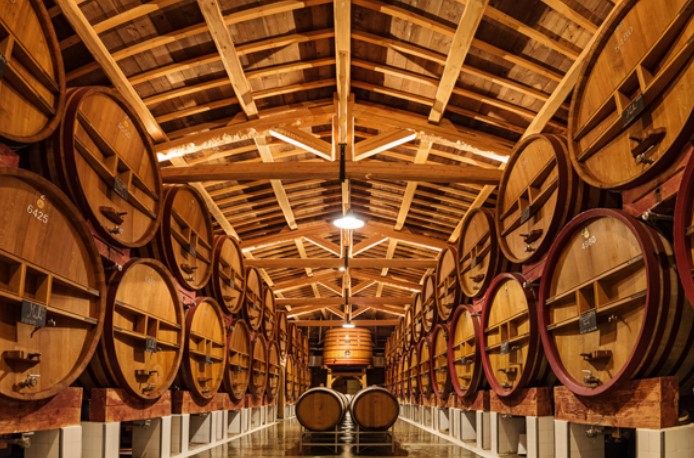
G: How do you see the wine market developing in the rest of the world?
CP: I think there will always be opportunities for very well-known estates and strong brands. I’m not too worried. Wine is still drinkable, and people like wine. It’s true that in times of crisis, wine is not necessarily the first product to be consumed. The world is a vast place, and some countries are growing. I have few fears. I think that today, for companies like ours, it’s essential to diversify: we need to offer entry-level wines as well as top-of-the-range wines. It’s important to have wines for both the on-trade (catering) and the off-trade (distribution) in order to limit the risks. You have to pay close attention to price, because customers don’t want to be taken for a ride. The market is so open that everyone knows the prices. In a restaurant, for example, the consumer can check the price at the table in a matter of seconds. If we make mistakes, we risk destroying the image of our domains very quickly, because if the consumer has the impression of being cheated, it may work once, but we risk losing them afterwards. It’s crucial to proceed with caution and avoid spectacular marketing stunts. This no longer works in today’s market.
In China, there are too many domains that have created ‘dummy’ brands with names similar to the big names, which has saturated the market. I’m often surprised to see unknown French brands in warehouses in China, pretending to be great fine wines. This is terrible for the market. In the short term, they may be successful, but in the long term, it saturates the market, creates confusion and damages confidence. That’s why the most stable estates, like ours, continue to sell because the market trusts us. Those who played with fire are paying the price.
Fifteen years ago in Provence, wine sales were challenging, with only one or two estates finding success. Many winegrowers were uprooting their vines, and the region was primarily focused on holiday homes. However, in recent years, the market has experienced a remarkable resurgence.
Thirty years ago, the Rhône region was in crisis, but a decade later, it had regained tremendous vitality. Today, the Côtes du Rhône faces new challenges as the market undergoes a complete transformation. This reflects the perpetual cycle of the wine industry, and it’s essential to learn from the past, as the market is constantly evolving.
In the current climate, it’s necessary to produce slightly less while continuing to invest in quality and forge strong connections with consumers. Maintaining a consistent commercial strategy is key to building trust.
We are fortunate to work with a timeless product: wine. Preferences may change according to market trends, but I remain optimistic. It’s important to listen and work diligently. For the last 10 to 15 years, we’ve been aware that this crisis could arise one day, and now we’re facing it.
G: How do you assess the american market, which is one of your key markets?
CP: Yes, the United States is our leading market for certain brands, including La Vieille Ferme. It’s a mature and well-developed market. Today, we shouldn’t expect massive growth, but it remains an incredibly dynamic market that continues to consume a lot of wine, and we’re delighted about that. I was in New York not long ago, and people are still enjoying fine wines. It’s also a country that seems promising for the future. Rosé sales have stagnated a bit, which makes sense after such rapid growth in recent years. We are now entering a phase of stabilization.
G: Is there a market you’d like to explore?
CP: I’m thinking of Thailand **** and I’m going there in October. It’s an interesting and dynamic market. First and foremost, it’s a tourist market with a strong culinary culture. A lot of Asian companies have transferred their headquarters to Bangkok, which is a great boost for Asia. There’s also the Dubai ‘craze’ at the moment. It’s not a big market, but it’s important to have a presence there for image reasons. It’s the only place in the world where there is no crisis. Every day, 15 new restaurants open their doors, and the pace of building construction is just as impressive. It’s all very exciting. They really want to create the Hong Kong of the 80s and 90s. Dubai is a hub for the rest of the region.
These are two markets, albeit still small, that are very promising, and it’s exciting to see how they develop. When it’s gloomy elsewhere, there are always places where the excitement is crazy.
G: What are your priorities in terms of commercial development for Hommage à Jacques Perrin? With production around 10,000 bottles, does this small production pose a challenge?
CP: Yes, you’re right. Hommage does lack a bit of visibility. Our goal is to be present on restaurant tables in most countries. I believe that’s where the best tasting conditions can be found, not to mention the importance of guidance, explanation, and education, which remain crucial. I therefore encourage my distributors and negociants to focus on the restaurant sector. A wine served at a table is a wine that is both seen and consumed.
Secondly, we are trying and perhaps haven’t done this enough, except in China to organize events around dinners. There are nine members of the family who can travel to host meals, whether in Switzerland, the United States, or Japan.
We travel extensively, and I encourage these trips to create Hommage vertical tastings and help people understand what Hommage is all about. These are great wines meant for aging. Of course, La Place understands what wines for aging are, but we need to help consumers understand by offering them tastings of multiple vintages to give them a sense of the concept. However, I must admit that the focus can be complicated by small-scale production. When a negociant has only 500 bottles to sell, they might invest less energy than if they had 6,000. Still, this small production is one of the unique characteristics of Hommage that we are committed to preserving.
The 2022 vintage of Hommage à Jacques Perrin
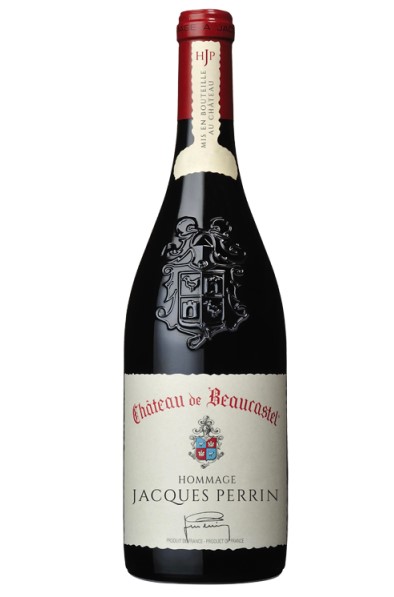
G: Could you say a few words about the 2022 vintage, which goes on sale at the beginning of September?
CP: It’s a lovely, very balanced vintage, after two hot years: 2019 and 2020. The 2019 vintage here was warmer than 2020, while 2021 was rather cool, with a few hail storms. The 2022 vintage can be enjoyed earlier than our warm vintages, while still having greater ageing potential than 2021. In 2022, we had a very fine September, which enabled us to harvest the mourvèdre, Hommage’s main grape variety, very late. This resulted in superb ripeness. The fruit is very pleasant. Mourvèdre tends to be a little closed in its early years, but by 2022 it’s opening up quite early, and that should continue. That’s its major asset.
G: You mentioned that Hommage à Jacques Perrin is a long-keeping wine intended for the restaurant trade. Given that restaurateurs keep very little stock, doesn’t the release of the 2022 vintage contradict your marketing policy?
CP: Yes and no. The majority of owners market the latest vintage, and it’s important to follow this policy. In previous years, we always supplemented the September release with a later vintage.
This time, we have chosen not to do so for two reasons: firstly, we are waiting for the end of our work to create a Hommage à Jacques Perrin oenothèque case with several vintages. We’ll be talking about this at La Place shortly. Secondly, we’ve already released quite a few old vintages in the past and we know that we’re in a period of maket transition. We don’t want to put too many wines on La Place and saturate the market this year. We prefer to limit the stock available. That said, it’s nice to be able to offer a wine that’s 10 to 15 years old. We ask our customers to make an effort to keep a stock of our wines, as many estates do with their customers.
Favorite bottle of Charles Perrin
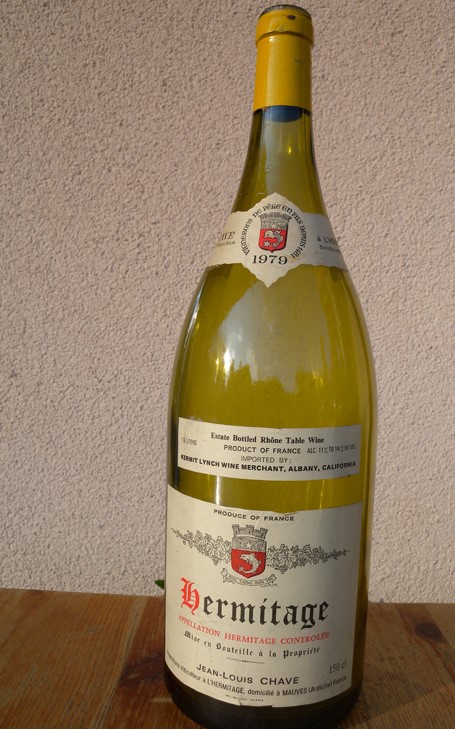
G: What’s your favourite bottle?
CP: It’s a Hermitage Blanc from Jean-Louis Chave, which brings back many unforgettable memories. This bottle dates from the year I was born, 1979, and I opened it on my 40th birthday. It was a bottle from our cellar on which my father had written ‘for Charles’. He put it in my locker. It was a wonderful moment when I opened it. Even if 1979 isn’t an incredible vintage in the Rhône Valley, this bottle had an unforgettable freshness. It had pure minerality, without the opulence that you sometimes find in Hermitage Blancs. The wine had a very taut, precise and straight backbone. There was a purity in the wine that still marks me. Blind, I would have thought it was an old Meursault, but not a 40-year-old wine, more like around 25 years old. It was one of my last great emotions.
Note:
* Northern Rhône: wines from appellations such as Côte-Rôtie and Crozes-Hermitage. Provence: in collaboration with American actor Brad Pitt on the Miraval estate. California: in collaboration with the Haas family, the Perrins have created the Tablas Creek Vineyard estate in the Paso Robles region.
Champagne: in collaboration with Brad Pitt and Champage Péters.
** in collaboration with world-renowned distiller Tom Nichol and Brad Pitt.
*** in partnership with Brad Pitt
**** Since 23 February 2024, when the new regulations came into force, Thailand has eliminated customs duties on wine imports.
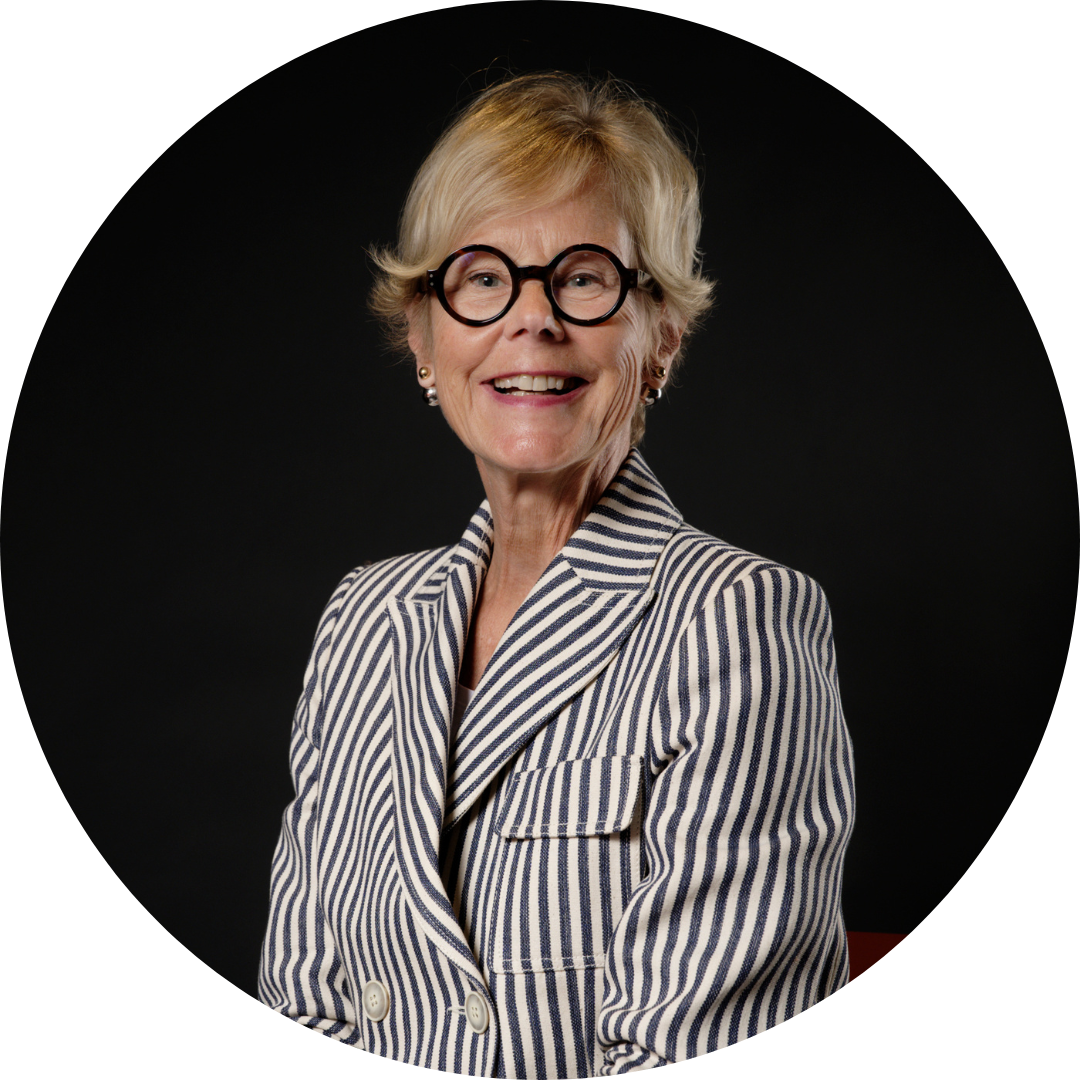 Gerda BEZIADE has an incredible passion for wine, and possesses a perfect knowledge of Bordeaux acquired within prestigious wine merchants for 25 years. Gerda joins Roland Coiffe & Associés in order to bring you, through “Inside La PLACE” more information about the estate we sell.
Gerda BEZIADE has an incredible passion for wine, and possesses a perfect knowledge of Bordeaux acquired within prestigious wine merchants for 25 years. Gerda joins Roland Coiffe & Associés in order to bring you, through “Inside La PLACE” more information about the estate we sell.

